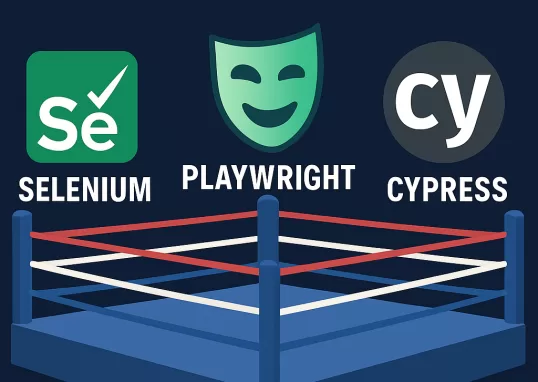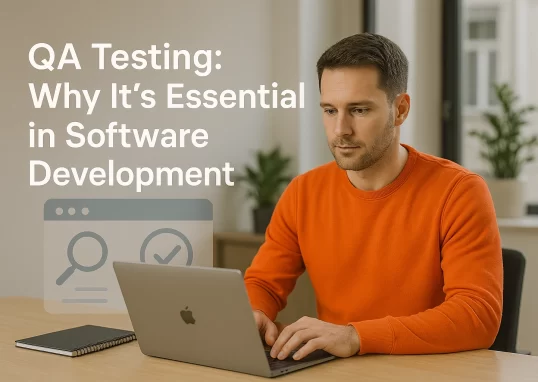
You chose Cypress because it was simple, intuitive, and made perfect sense for front-end testing. But time passed. Your project grew. And now tests are running slower, your pipeline has become a bottleneck, and that initial promise of simplicity feels more and more distant.
If that sounds familiar, here’s the good news: there’s already a modern, faster, and smarter alternative to run your E2E tests. With native AI, a strong focus on productivity, and quick integration with your CI, TestBooster was built to solve exactly the problems Cypress can’t keep up with.
This checklist will guide you through the process of migrating your project, in some parts or totally, from Cypress to TestBooster in just a few hours, with everything ready to run before lunch.
Why migrate?
Cypress is great until a certain point. But it doesn’t scale well for large teams, demanding pipelines, or projects with hundreds of tests.
You start off running tests locally and getting fast feedback. But soon, the issues pile up:
- Slow test runs in the CI pipeline.
- Lack of efficient parallelization.
- Flaky tests that are hard to isolate.
- Poor use of build resources.
- No clear way to prioritize important tests.
TestBooster steps in to solve all that, with a modern approach:
- Automates test execution using AI.
- More resilient to breaking changes by understanding application context, not relying solely on source code.
- Test cases written in natural language.
- AI that’s independent of LLMs.
If your test suite is starting to slow you down, there’s no need to rewrite everything from scratch. With your business’s best interest in mind, a smart move might be to keep what still works well in Cypress while staying open to new opportunities.
TestBooster is an AI-powered testing platform built to scale alongside your operation. It automates software testing in a smarter, more adaptable, and scalable way — no need for drastic changes right away. Don’t limit yourself to what you already know. Explore your options.
To help you get started easily, we’ve put together a simple checklist so you can try TestBooster without the hassle.

Test now: checklist to migrate from Cypress to TestBooster
- Take inventory of your current test suite
List all existing tests, frameworks in use, CI integrations, plugins, and Cypress dependencies. Knowing where you stand is key to a safe migration. - Classify your tests by type and criticality
Separate critical from non-critical tests, and organize them by type: E2E, integration, unit. - Identify flaky tests
Run a full Cypress execution and flag any tests that fail intermittently. TestBooster tracks this automatically, but having a starting point helps speed up onboarding. - Standardize naming, folders, and structure
Clean up your project’s naming conventions and directory structure. This makes it easier for TestBooster to interpret your suite accurately. - Remove Cypress-specific dependencies
If your tests rely heavily on Cypress APIs or custom commands, consider rewriting parts in a more framework-agnostic way. This gives you more flexibility. - Set up isolated execution environments
Ensure your tests can run in parallel, inside independent containers, without shared state. That’s crucial for TestBooster’s distributed execution model. - Adapt your CI to run with TestBooster
Update your CI configuration to integrate with TestBooster. Setup is fast, with support for GitHub Actions, GitLab, CircleCI, and more. - Run your first test suite on TestBooster
Upload your project, run the tests, and compare the results: total run time, number of executed tests, coverage, and flake detection. You’ll notice the difference right away. - Update your metrics and alerts
With greater speed and smarter execution, you’ll want to track new metrics: test priorities, regression trends, time savings, and infrastructure cost reduction. - Gradually phase out Cypress
Now that you have a faster, smarter alternative in place, you can move away from Cypress at your own pace or make the switch entirely.
TestBooster: changing E2E Testing
TestBooster is a complete testing platform powered by AI, built for teams that need:
- Up to 10x faster test execution.
- Test cases created in natural language.
- A user-friendly, intuitive interface.
- More resilient tests, ready for fast-changing applications.
And the best part? You don’t need to rewrite your entire test suite. The goal here isn’t to choose one over the other — it’s an invitation to experiment with AI in your testing process.
And if you follow this checklist, you’ll be ready to take advantage of it all starting today.
Smarter testing that grows with your application

If your test suite has become a bottleneck, it’s time to stop patching things last-minute. The issue isn’t the size of your app, but how you’re running your tests.
With TestBooster, you have a more modern, flexible, and scalable alternative to Cypress.
Copy the checklist, try it out, and watch your test suite run at full speed, even before lunch.






